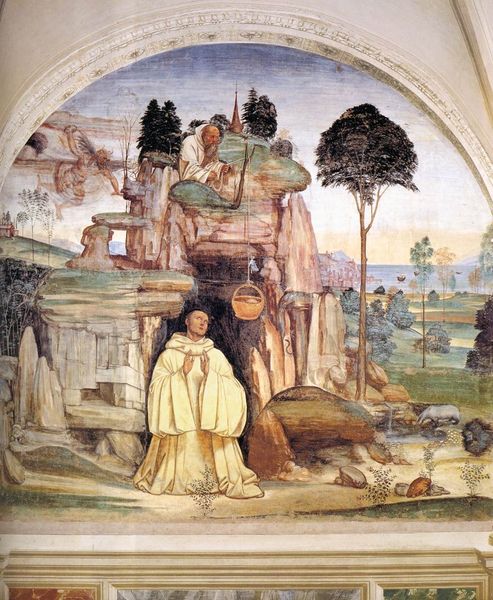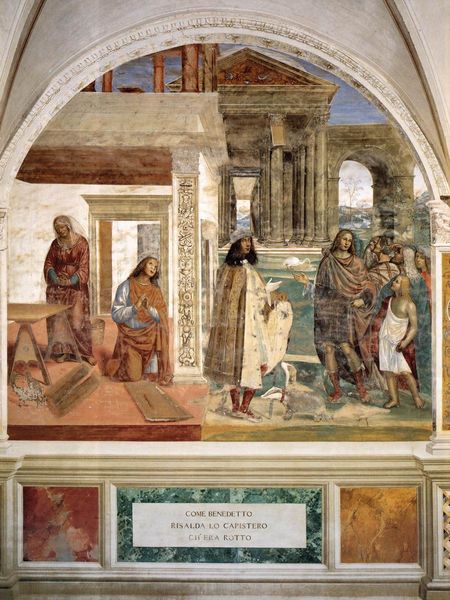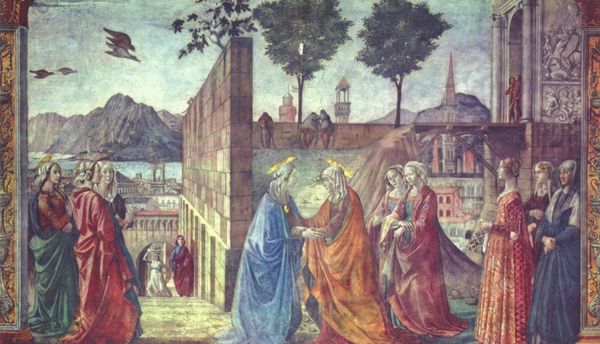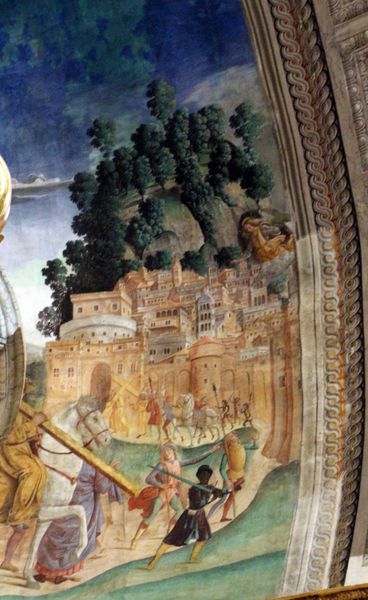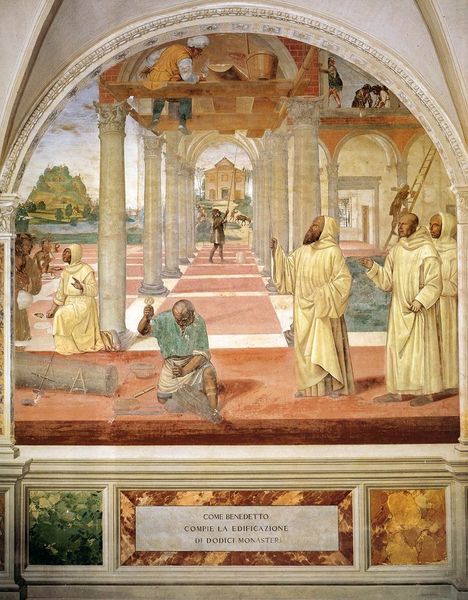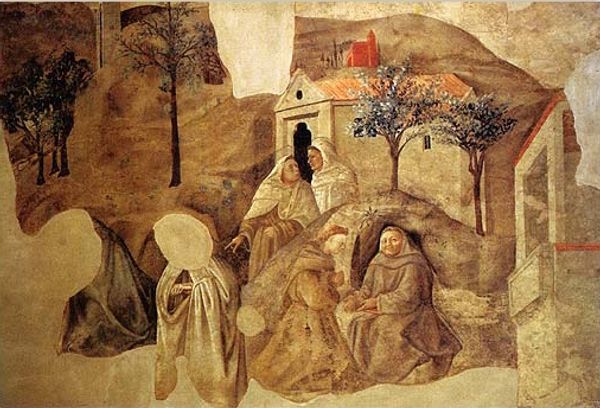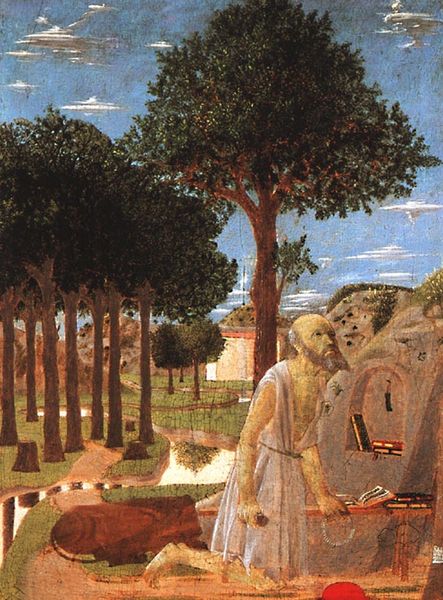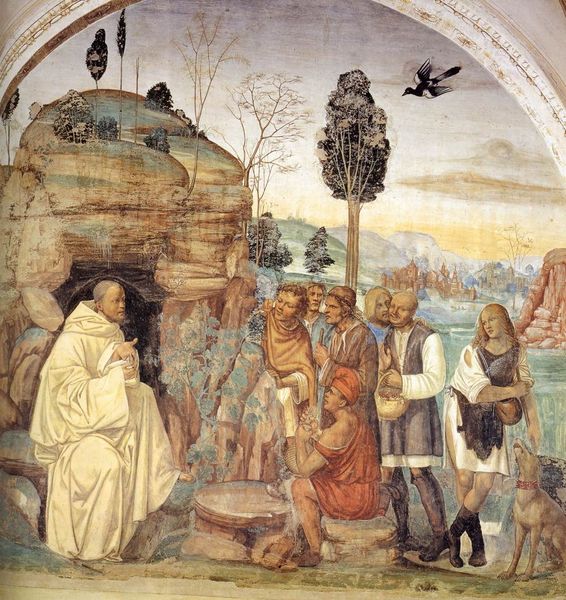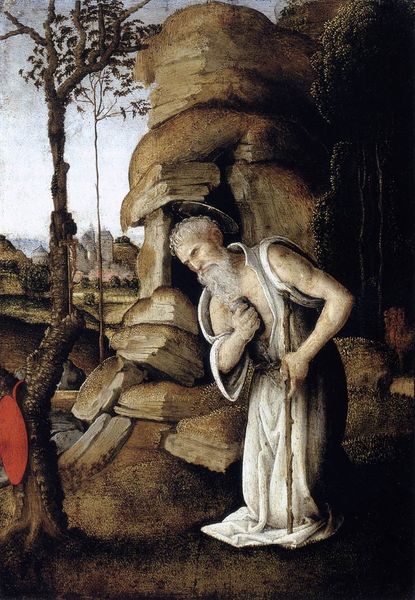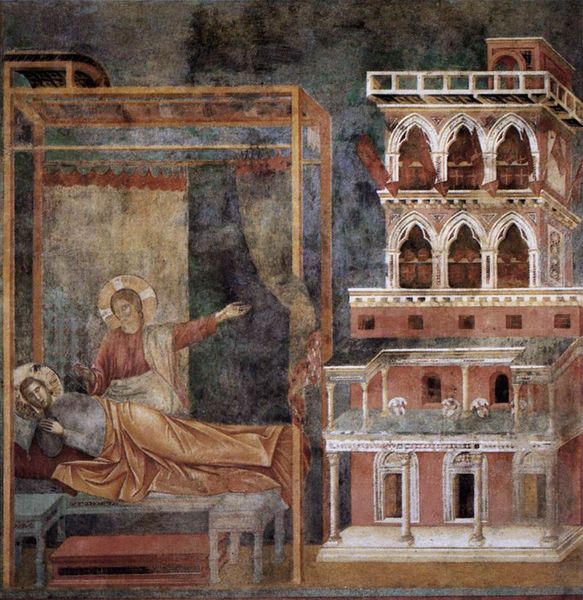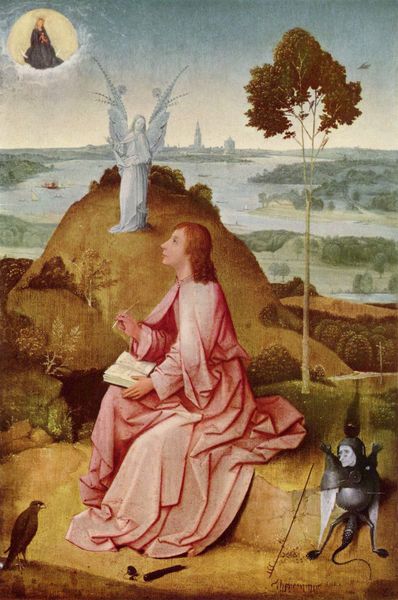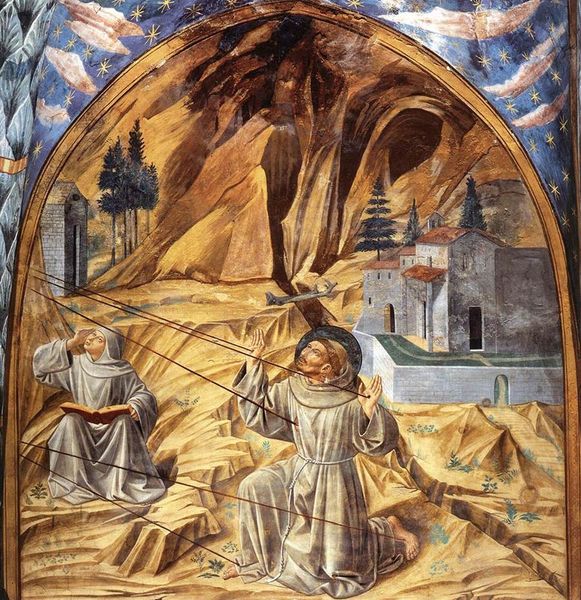
painting, fresco
#
portrait
#
narrative-art
#
painting
#
landscape
#
holy-places
#
fresco
#
handmade artwork painting
#
oil painting
#
cityscape
#
history-painting
#
italian-renaissance
#
mixed media
Copyright: Public domain
Curator: Look at the delicacy and subdued colors in this fresco fragment. It's a segment from "Life of St Benedict, Scene 4. The Monk Romanus Dresses Benedict," created around 1508 by Il Sodoma. Editor: It has such a peaceful, almost dreamlike quality, despite the monumental scene in the background. The monk's face seems so weary, patient. Curator: Yes, Sodoma places the figures in this incredibly detailed landscape, typical of the Italian Renaissance. But it's worth noting how these early Renaissance depictions were intertwined with societal expectations of masculinity and devotion, wasn't it? Benedict, the focus, embodies piety and service but there are questions raised by his total subjugation. Editor: And it all ties back to the bird, I think. It's the clear symbolic bridge here, soaring above even the most structured areas like the city atop the hill. That singular crow, or raven—is it delivering food, or divine insight perhaps? Or something else? Curator: Interesting reading. The artist really grapples with representing hierarchical social structures. The detail in the walled city, poised above a rocky outcropping, stands in stark contrast to the foreground—suggesting perhaps an unresolvable separation between the ideal of earthly city life, versus something other, divine and contemplative. What does it mean to leave a civic life behind? Sodoma shows the material trappings of such choice through contrasts. Editor: Exactly. These motifs reappear continually throughout art history. Water or, here, sky, equals purity. Stone or earth is stability or, conversely, entombment, perhaps, even for this monk. And the robes become both physical comfort, and emotional covering as well. I keep wondering about how to parse the psychology here: freedom from care, freedom to become unencumbered. Curator: I think viewing Sodoma’s artistic liberties in the context of its sociopolitical setting makes clear the extent to which visual tropes shaped understandings and continue shaping ideas surrounding social devotion today. Editor: Yes! Considering art through layers of historical and ongoing symbol usage enables a new range of conversations for today. Curator: Thanks! Editor: Indeed, that helps!
Comments
No comments
Be the first to comment and join the conversation on the ultimate creative platform.
